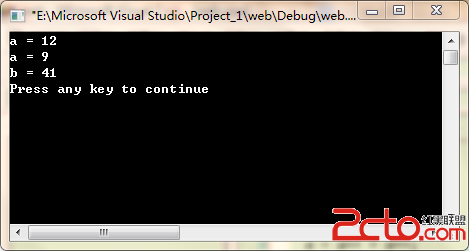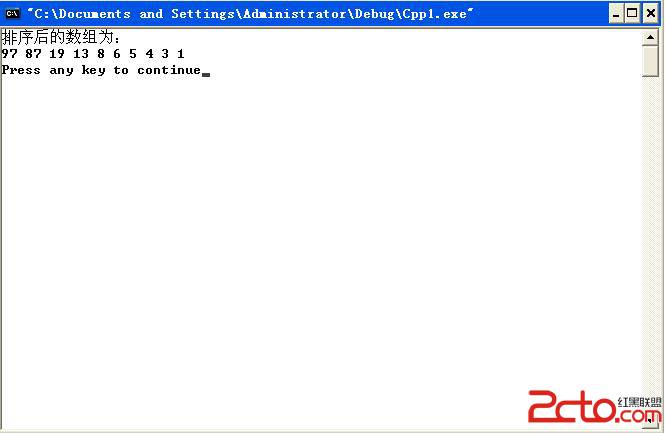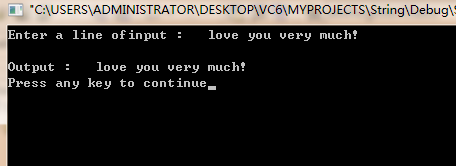uboot中timer定时器的设置,uboot汇编部分没有对timer初始化,而是在C中。在C入口函数void start_armboot(void)中,首先是通过如下代码方式调用:
[cpp]
typedef int (init_fnc_t) (void);
[html]
init_fnc_t *init_sequence[] = {
a/a/l/board.c
#if defined(CONFIG_ARCH_CPU_INIT)
arch_cpu_init, /* basic arch cpu dependent setup */
#endif
board_init, /* basic board dependent setup */
#if defined(CONFIG_USE_IRQ)
interrupt_init, /* set up exceptions */
#endif
timer_init, /* initialize timer */
#ifdef CONFIG_FSL_ESDHC
get_clocks,
#endif
env_init, /* initialize environment */
init_baudrate, /* initialze baudrate settings */
serial_init, /* serial communications setup */
console_init_f, /* stage 1 init of console */
display_banner, /* say that we are here */
#if defined(CONFIG_DISPLAY_CPUINFO)
print_cpuinfo, /* display cpu info (and speed) */
#endif
#if defined(CONFIG_DISPLAY_BOARDINFO)
checkboard, /* display board info */
#endif
#if defined(CONFIG_HARD_I2C) || defined(CONFIG_SOFT_I2C)
init_func_i2c,
#endif
dram_init, /* configure available RAM banks */
#if defined(CONFIG_CMD_PCI) || defined (CONFIG_PCI)
arm_pci_init,
#endif
display_dram_config,
NULL,
};
这里是u-boot的C代码部分的入口:
[cpp]
void start_armboot (void)
{
init_fnc_t **init_fnc_ptr;
。
。
。
for (init_fnc_ptr = init_sequence; *init_fnc_ptr; ++init_fnc_ptr) {
if ((*init_fnc_ptr)() != 0) {
hang ();
}
}
上面的函数调用很复杂,不是讨论这个所以暂时不深究,直接看它调用arch/arm/cpu/arm920t/s3c24x0/timer.c文件中的函数int timer_init (void),代码如下:
[cpp]
int timer_init(void)
{
struct s3c24x0_timers *timers = s3c24x0_get_base_timers();
ulong tmr;
/* use PWM Timer 4 because it has no output */
/* prescaler for Timer 4 is 16 */
writel(0x0f00, &timers->TCFG0);
if (timer_load_val == 0) {
/*
* for 10 ms clock period @ PCLK with 4 bit divider = 1/2
* (default) and prescaler = 16. Should be 10390
* @33.25MHz and 15625 @ 50 MHz
*/
timer_load_val = get_PCLK() / (2 * 16 * 100);
timer_clk = get_PCLK() / (2 * 16);
}
/* load value for 10 ms timeout */
lastdec = timer_load_val;
writel(timer_load_val, &timers->TCNTB4);
/* auto load, manual update of Timer 4 */
tmr = (readl(&timers->TCON) & ~0x0700000) | 0x0600000;
writel(tmr, &timers->TCON);
/* auto load, start Timer 4 */
tmr = (tmr & ~0x0700000) | 0x0500000;
writel(tmr, &timers->TCON);
timestamp = 0;
return (0);
}
以下是对函数的详细分析:
1、先看数据结构s3c24x0_timers
[cpp]
struct s3c24x0_timers {
u32 TCFG0;
u32 TCFG1;
u32 TCON;
struct s3c24x0_timer ch[4];
u32 TCNTB4;
u32 TCNTO4;
};
有引出来了另一个结构s3c24x0_timer
[cpp]
struct s3c24x0_timer {
u32 TCNTB;
u32 TCMPB;
u32 TCNTO;
};
看下这两个结构是不是涵盖了所有timer的寄存器,对照s3c2440的datasheet得出结论是:timer寄存器地址空间从(0x51000000~0x51000040)依次对应的寄存器名是却是是上面的结构体中的寄存器,总共是17个寄存器.
为什么会有4个结构s3c24x0_timer呢?因为2440有5个timer,其中前四个timer0~timer3工作方式类似,都有外部引脚引出,而第五个timer4不同与他们,第一个就是它没有TCMPB寄存器,具体的区别可以看看这个文档或是datasheet:
2、s3c24x0_get_base_timers()函数返回的就是timer寄存器空间的起始地址0x51000000
[cpp]
static inline struct s3c24x0_timers *s3c24x0_get_base_timers(void)
{
return (struct s3c24x0_timers *)S3C24X0_TIMER_BASE;
}
3、
[cpp]
/* use PWM Timer 4 because it has no output */
/* prescaler for Timer 4 is 16 */
这个注释是不是有问题呢,我怎么查不到timer4预分频器是16位的,都是8位。是不是要表达计数器是16位的呢?
4、writel(0x0ff,&timers->TCFG0)的作用是什么呢?在arch/arm/include/asm/io.h文件中既然有3处定义了这个函数,考察了一下只有下面被编译:
[cpp]
#define writel(v,a) __arch_putl(v,a)
[cpp]
#define __arch_putl(v,a) (*(volatile unsigned int *)(a) = (v))
分析:就是往a寄存器写入v.
这里就是往寄存器TCFG0写入0x0ff,先看下TCFG0寄存器信息:
将timer0、1的预分频器的值写ff就是255,






